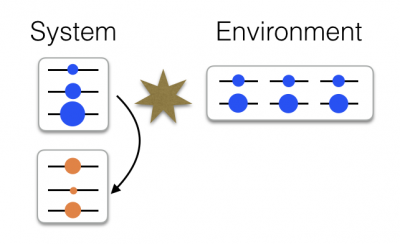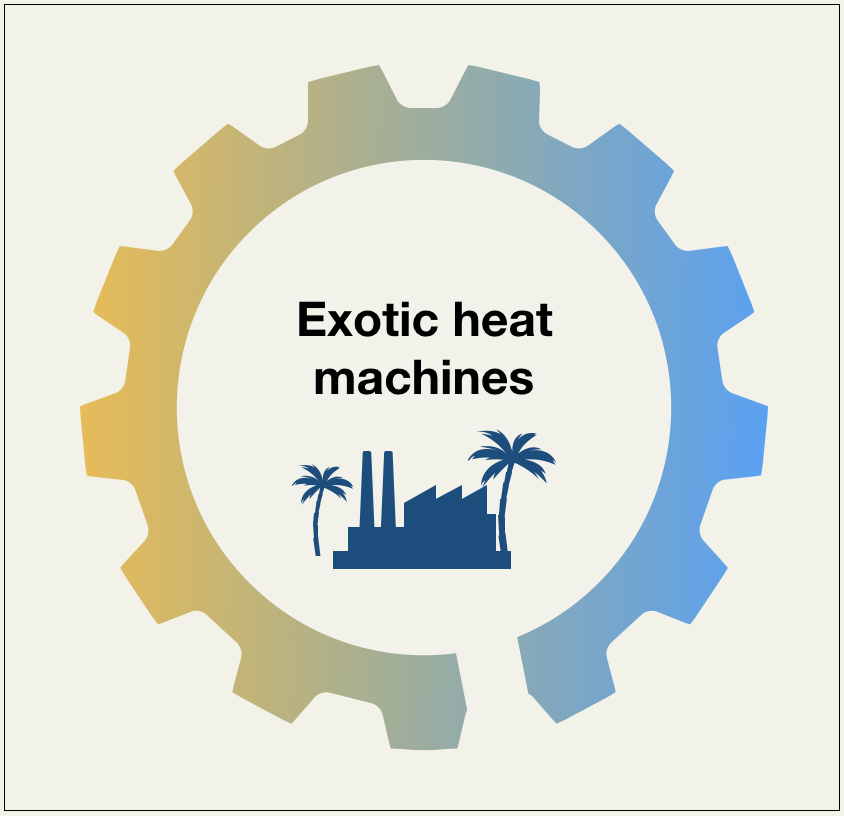-
What limits the performance of a machine that manipulates a microscopic quantity which cannot be expressed in terms of energy or entropy?
-
What is the price paid or the cost for running a certain quantum/thermodynamic protocol?
In [1] I introduced the notion of exotic heat machines (X machines, in short). These machines used thermal resources such as work repository ("weight"), and thermal environments (possibly very small ones) for executing a non-thermal task. Imagine that we have an extended weight of finite size. Instead of lifting it we want to deform it to a different shape. It is possible that the final shape has the same internal energy as the initial shape. This implies that on average no energy is needed to do the deformation. Does this mean that any deformation is possible? No. By applying forces on microscopic a quantum weight (e.g. a few spins or oscillators) the allowed operations are restricted to unitary operations which follow from the Schrodinger equation for isolated systems. By allowing our weight to interact with some external environment the possible set of transformation (deformation) drastically increases. Nevertheless, we expect that the set of allowed transformation will be limited by the initial temperature of the environment and its finite (possibly very small) heat capacity.
In the microscopic world, X machines aim to modify some fine-grained quantity by accessing one or more thermal environments. These environments can be very small, so to contrast them with the standard thermodynamic reservoirs we call them 'microbaths' [2]. Microbaths are initially in thermal equilibrium but can easily get out of equilibrium depending on their size. A fine-grained quantity is a quantity (measurement result) that cannot be deduced from average energy, entropy or other quantities that appear in the second law of thermodynamics. For example, the population of specific energy level is considered a fine-grained quantity. However, a fined-grained quantity may also involve all energy level as in the case of energy variance.

In the figures above we see simple examples of exotic heat machine setups. In the left figure, the "weight" we want to deform is a three-level system that is initially in a thermal state. The task of the machine is to reduce the population of the second level as much as possible. It can do so by interacting with a microbath composed of three initially thermal spins. The machine itself is not visible in this figure. The machine is the interaction protocol we execute (the global unitary transformation) to depopulate the second level as much as possible. In the second example (right figure) the system is composed of two spins that is initially correlated. The task of the machines is to make them as correlated as possible in the energy basis.
Even in these two simple examples that involve only a few particles with just a few levels, it is hard to answer two crucial questions:
- what is the bound on the optimal performance depending on the initial temperature and the number of spins in the microbath?
- what is the price paid for doing this transformation, to what extent the microbath has degraded and how many times can we use this microbath for doing the same task on fresh new systems?
These questions drive me to think about the next generation of heat machines. Moreover, they compel us to expand the limits of thermodynamics into an exciting yet unexplored regime.
References
-
R. Uzdin, "The second law and beyond in microscopic quantum setups", arXiv:1805.02065 (2018)
-
R. Uzdin and S. Rahav “Global Passivity in Microscopic Thermodynamics”, Physical Review X, 8, 021064 (2018)


